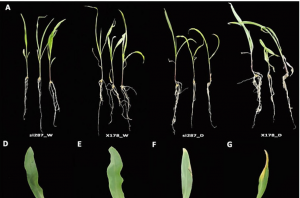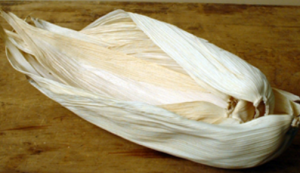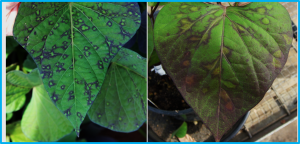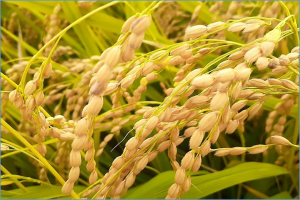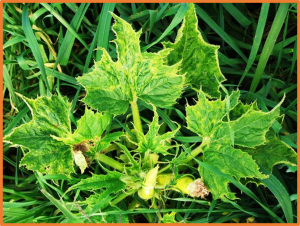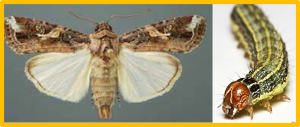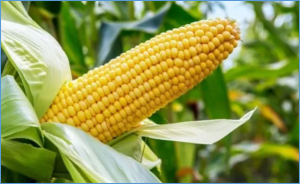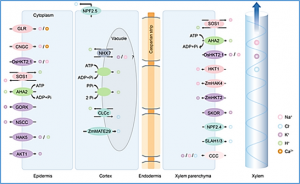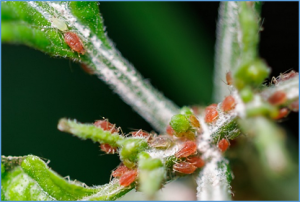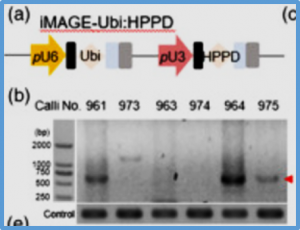In this study, we subjected the 3-leaf-period plants of two maize inbred lines, a drought-tolerant line (si287) and a drought-sensitive line (X178), to drought stress for seven days while growing in a chamber. Subsequently, we measured physiological traits and analyzed transcriptomic and metabolic profiles of two inbred lines. Our KEGG analysis of genes and metabolites revealed significant differences in pathways related to glycolysis/gluconeogenesis, flavonoid biosynthesis, starch and sucrose metabolism, and biosynthesis of amino acids.
As a by-product of maize production, maize husk is an important industrial raw material. Husk layer number (HN) is an important trait that affects the yield of maize husk. However, the genetic mechanism underlying HN remains unclear. Herein, a total of 13 quantitative trait loci (QTL) controlling HN were identified in an IBM Syn 10 DH population across different locations. Among these, three QTL were individually repeatedly detected in at least two environments
Sweet potato (Ipomoea batatas [L.] Lam.) is a versatile crop, cultivated in the subtropical and tropical areas, as food, fodder, and industrial raw material crop. In China, sweet potato has been used as a health-care food in recent years, as it contains a wide range of nutrients and xenobiotic phytochemicals. However, viral diseases are major constraint for the sweet potato yield and quality, especially the seed production and quality.
This study examined how silicon and zinc fertilizers affect the quality and aroma of Nanjing 46. We applied nine different fertilizer treatments, one involving soil topdressing at the top fourth leaf-age stage and one involving foliar spraying during the booting stage of the silicon and zinc fertilizers. We tested the effects of the nine treatments on grain quality and aroma.
Leaf size is a critical determinant of plant architecture in cucumbers, yet only a few genes associated with this trait have been mapped or cloned. Here, we identified and characterized a mutant with little and wrinkled leaves, named lwl-1. Genetic analysis revealed that the phenotype of the lwl-1 was controlled by a single recessive gene. Through map-based cloning, the lwl-1 locus was narrowed down to a 12.22-kb region exclusively containing one fully annotated gene CsGME (CsaV3_2G004170).
Phytophagous insects have evolved sophisticated detoxification systems to overcome the antiherbivore chemical defenses produced by many plants. However, how these biotransformation systems differ in generalist and specialist insect species and their role in determining insect host plant range remains an open question. Here, we show that UDP-glucosyltransferases (UGTs) play a key role in determining the host range of insect species within the Spodoptera genus
Soil salinization is one of the leading threats to global ecosystems, food security, and crop production. Plant growth-promoting rhizobacteria (PGPRs) are potential bioinoculants that offer an alternative eco-friendly agricultural approach to enhance crop productivity from salt-deteriorating lands. The current work presents bacterial strain CNUC13 from maize rhizosphere soil that exerted several PGPR traits and abiotic stress tolerance.
Excess soil salinity affects large regions of land and is a major hindrance to crop production worldwide. Therefore, understanding the molecular mechanisms of plant salt tolerance has scientific importance and practical significance. In recent decades, studies have characterized hundreds of genes associated with plant responses to salt stress in different plant species. These studies have substantially advanced our molecular and genetic understanding of salt tolerance in plants and have introduced an era of molecular design breeding of salt-tolerant crops.
Arthropod herbivory poses a serious threat to crop yield, prompting plants to employ intricate defense mechanisms against pest feeding. The generalist pest 2-spotted spider mite (Tetranychus urticae) inflicts rapid damage and remains challenging due to its broad target range. In this study, we explored the Arabidopsis (Arabidopsis thaliana) response to T. urticae infestation, revealing the induction of abscisic acid (ABA),
The CRISPR/Cas type V-I is a family of programmable nuclease systems that prefers a T-rich protospacer adjacent motif (PAM) and is guided by a short crRNA. In this study, the genome-editing application of Cas12i3, a type V-I family endonuclease, was characterized in rice. We developed a CRIPSR/Cas12i3-based Multiplex direct repeats (DR)-spacer Array Genome Editing (iMAGE) system that was efficient in editing various genes in rice.


 Curently online :
Curently online :
 Total visitors :
Total visitors :
